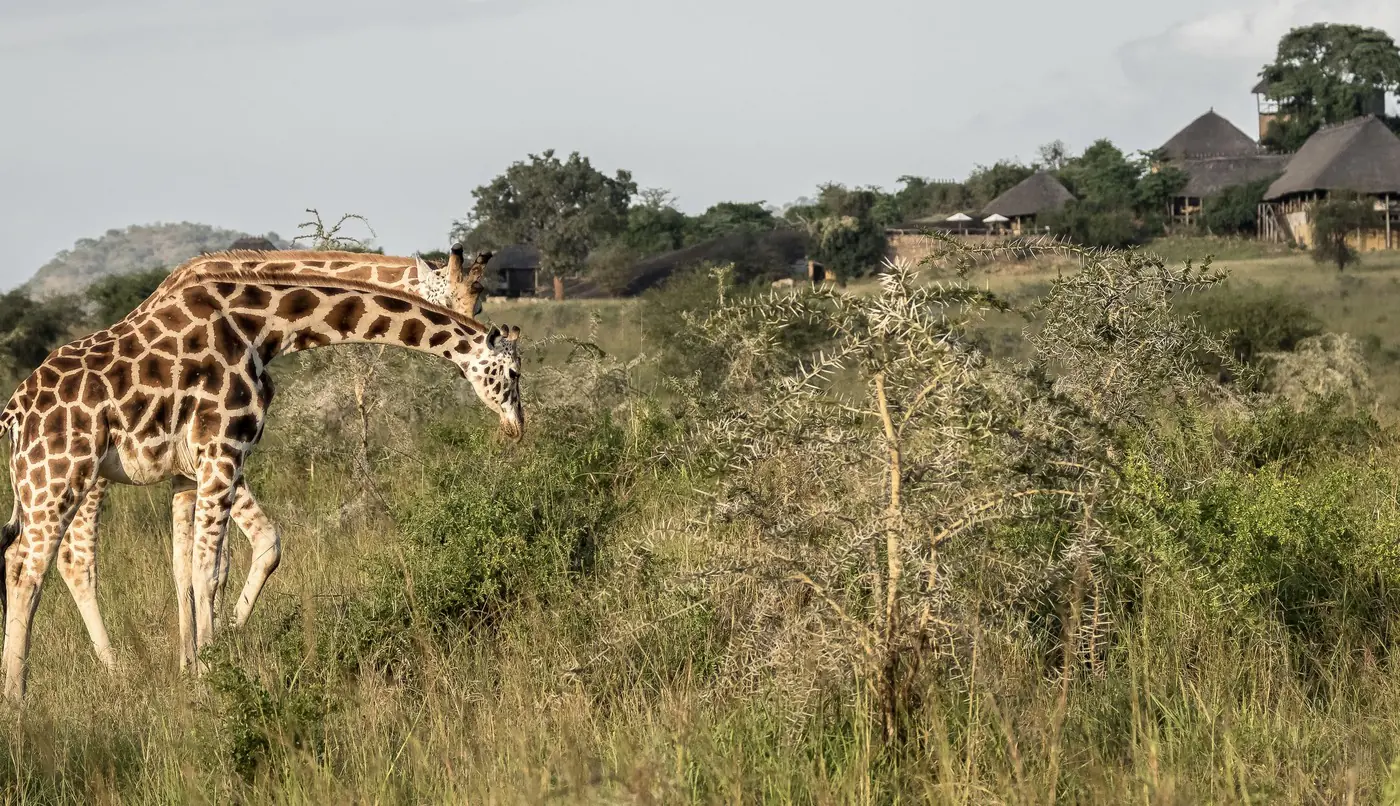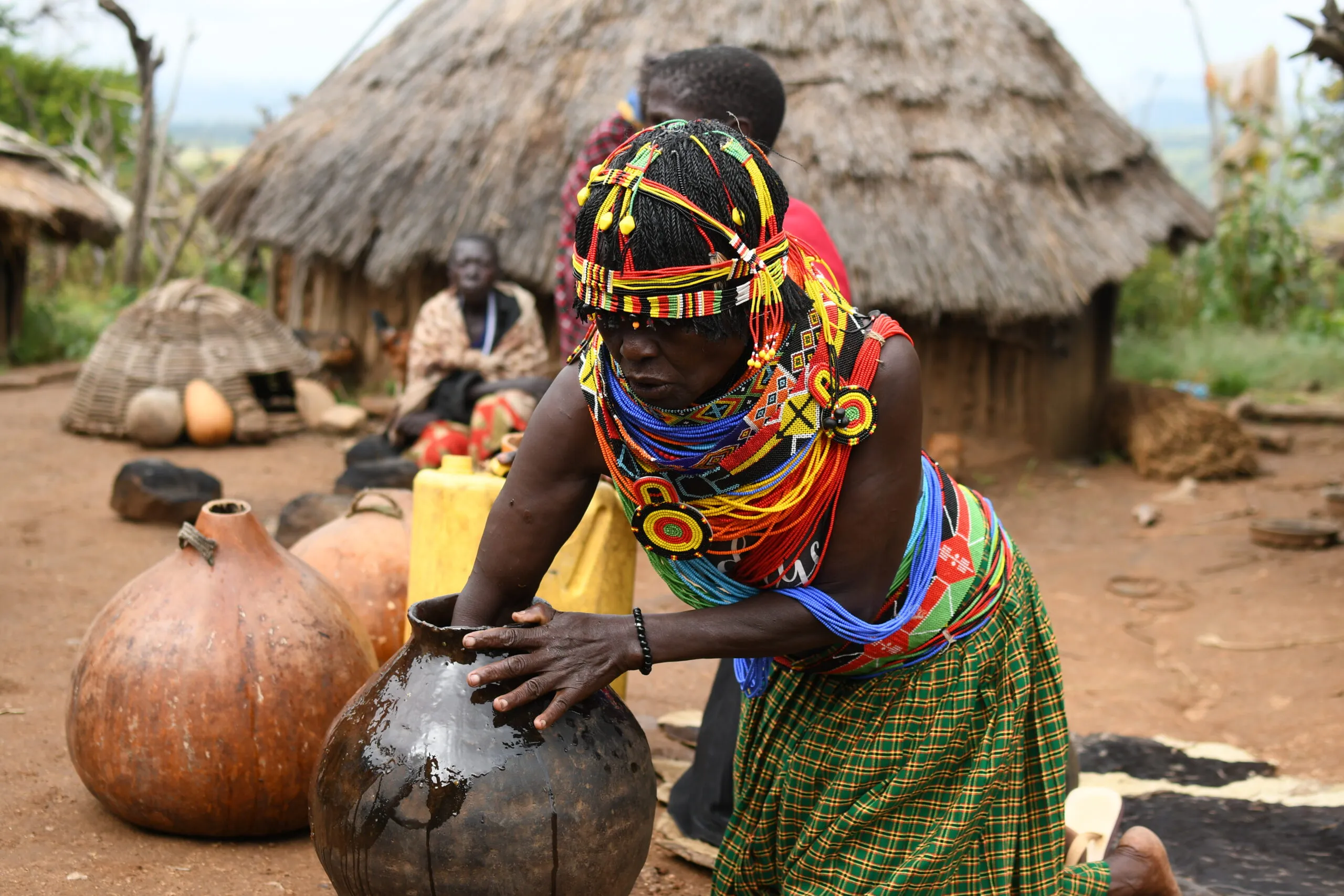Kidepo National Park
Kidepo National Park
Kidepo National Park in Uganda is one of the most remote wildlife parks in East Africa. It is also one of the most beautiful. It’s located in the far northeast of the country, bordering South Sudan and northwest Kenya, and is more than 10 hours’ drive from Kampala (or accessible by plane). The park features rolling savannahs, rocky outcrops (kopjes), and distant towering mountains, offering some of the most beautiful views in Africa. With very few tourists, it remains a hidden gem!
CNN also ranks Kidepo Valley as the third-best park in all of Africa, praising its scenic landscapes, incredible wildlife sightings, and untouched beauty. It’s one of the few places where you can truly enjoy nature and wildlife in peace. With only about 16 visitors per day on average, you’re unlikely to encounter many other tourists. Kidepo Valley National Park’s varied landscapes create beautiful views and a wide range of plant species, leading to an impressive diversity of animals. Some animals, like the bat-eared fox, cheetah, Kudus, aardwolf, and caracal, can only be found here in Uganda. Lions, leopards, Cape buffalos, Common Ostriches, and African bush elephants also roam this park, which is home to over 470 bird species.

Why Visit Kidepo National Park?
1. Remote And Scenic Landscapes
While it takes a bit of effort to reach, Kidepo National Park, the reward is well worth the journey. Upon arrival, visitors are welcomed by breathtaking landscapes and a peaceful atmosphere. The park is mainly covered by vast savannahs, reminiscent of Kenya’s Maasai Mara. These wide-open plains are dotted with distinctive borassus palms and sausage trees. The savannahs are beautifully interrupted by rock outcrops (kopjes), with the towering Mt Morungole standing proudly in the background, a sacred peak to the Ik People. This expansive savannah, framed by the mountain, offers truly picturesque scenery, and if there wasn’t a single animal living there it would still be a wonderful place to visit.
2. Game Drives
Kidepo National Park is a great spot for safaris, especially with a 4WD Landcruiser. It’s home to over 86 types of mammals, including four of the Big 5 (no rhinos, though), with plans to bring white rhinos back. During a game drive, you’re almost guaranteed to see elephants, buffalo, warthogs, Rothschild’s giraffes, patas monkeys, and plains zebras. You’ll also spot different kinds of antelope like Jackson’s hartebeest, oribi, bohor reedbuck, and maybe even eland. The park’s carnivores include side-striped jackals, and if you’re lucky, you might also spot lions, leopards, cheetahs, or spotted hyenas. Kidepo is also home to rare dry-country animals that aren’t found in many other places in Uganda, such as aardwolves, bat-eared foxes, lesser kudu, and Guenther’s dik-dik.
3. Guided Walking Safaris
On a safari walk in Kidepo National Park you’ll stroll across the vast savannahs, soaking in the tranquility, listening to the sounds of the bush, and searching for various wildlife species. You will wander among the towering borassus palms and along the ‘seasonal rivers.’ Along the way, you might encounter buffalo, elephants, zebras, impalas, cheetahs, and even lions up close. Thankfully, a skilled and armed ranger from the Uganda Wildlife Authority will be with you, ensuring your safety throughout the adventure.
4. Birdwatching
The birds of Kidepo are a significant drawcard. The park hosts over 470 species the second-highest bird record of any Ugandan protected area after Queen Elizabeth National Park. Many rare birds can even be spotted right at the park’s campsites. Some of the exciting “specials” include the Karamoja apalis, Jackson’s hornbill, and the black-breasted barbet, which are sure to make any birdwatcher excited. You’ll also see beautiful birds like the golden pipit, silverbird flycatcher, superb starling, scarlet-chested sunbird, and the aptly named beautiful sunbird. Other species to look out for include Clapperton’s spurfowl, yellow-necked spurfowl, white-crested turaco, white-headed buffalo weaver, steel-blue whydah, rose-ringed parakeet, and large groups of ostriches.
5. Cultural Heritage
The lifeblood of Kidepo’s cultural heritage is found in the local communities surrounding the park, particularly the cattle-herding Karamojong people and the hunter-gatherer Ik tribe, who live on the slopes of Mt Morungole. The Karamojong are believed to have migrated south from what is now Ethiopia around 1600 BC. Along with the Turkana (from Kenya), Iteso, Dodoth, Jie, and other tribes, they form the ‘Karamojong cluster,’ which stretches across northeastern Uganda and into South Sudan. This vibrant tribe has successfully preserved its traditional way of life, allowing visitors to experience its rich culture, customs, dances, and games in an authentic and non-touristy way.

Kidepo National Park Accommodation
Visitors to Kidepo National Park have different accommodation options. There are campsites with bathrooms where you can set up your own tent. For more comfort, there’s a rest camp with self-contained chalets, and a camp with smaller bandas that share bathroom facilities. The park also has mid-range and luxury lodges for those looking for a more upscale stay.
Orugano Bwindi Lodge
Our lodge, Orugano Bwindi Lodge, is the perfect place to stay if you’re planning to go gorilla trekking in the Nkuringo Sector of Bwindi. It’s close to both the Virunga Volcanoes in Mgahinga Gorilla National Park and the beautiful Lake Mutanda. The Nkuringo area is home to several gorilla families, including Nkuringo, Bushaho, Christmas, Nkuringo, and Posho. This part of Bwindi is known for being the most scenic, with stunning views of the Virunga volcanoes.
When to visit Kidepo National Park
Kidepo Valley is in a semi-arid area, so it gets very little rain, even in the Wet season, making it a great place to visit all year round. The best time for wildlife viewing is usually during the Dry season (September to March), when large animals gather around permanent water sources. However, the Wet season (April to August) has its own advantages, with cooler daytime temperatures and lush, green landscapes. If you’re planning to do gorilla or chimpanzee trekking during your safari in Uganda, it’s better to consider the weather for those activities as well, instead of just focusing on Kidepo for your trip.
How to get Kidepo National Park?
Some visitors might not want to take the long 10-hour drive from Kampala through Karuma, Gulu, and Kitgum, which includes both paved and dirt roads. Instead, they can take charter flights from Entebbe International Airport or Kampala Aero Club to the Apoka airstrip. These flights run on certain days and need a minimum number of passengers. Another option is a longer road trip. Many travelers drive from Murchison Falls, which takes about 6 hours or more, and some choose to break up the journey by staying overnight near Sipi Falls in Eastern Uganda.
How many days are recommended for Kidepo?
Some tour operators offer 3-day safaris to Kidepo Valley National Park, but Orugano Safaris suggests at least 4 days if you’re focusing only on the park, and 5 or more days if you’re adding other destinations. This is because Kidepo is over 550km (340 miles) northeast of Kampala (or Entebbe International Airport), and the drive takes more than 10 hours each way. A 3-day trip would mean spending 2 full days just driving, leaving only 1 day to explore the park. If you’re short on time, it might be better to choose a safari closer to Kampala or Entebbe, like Queen Elizabeth or Murchison Falls National Parks.





